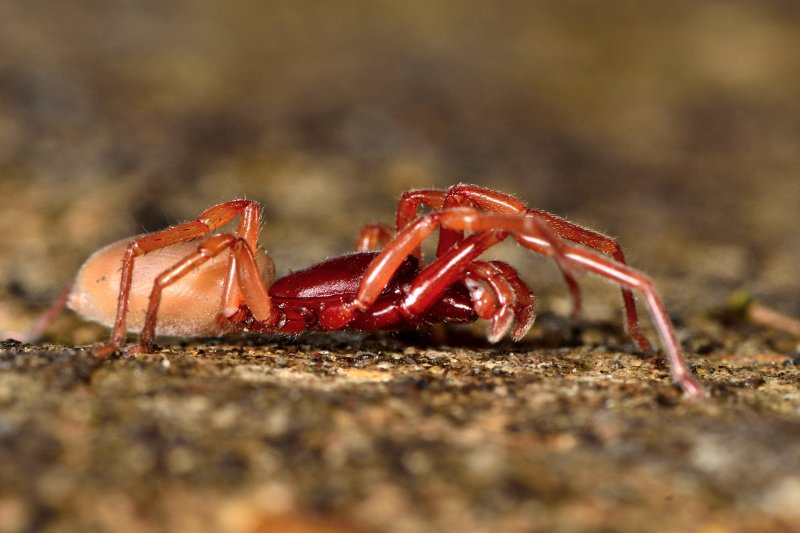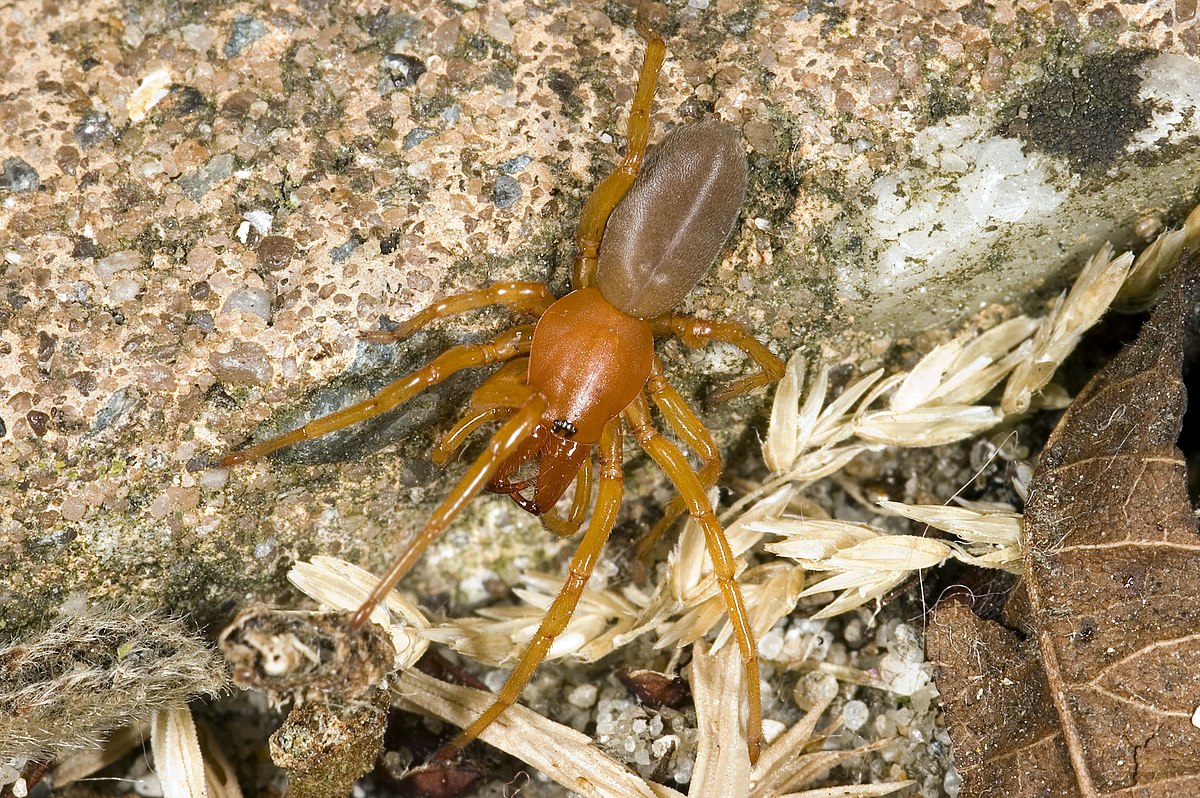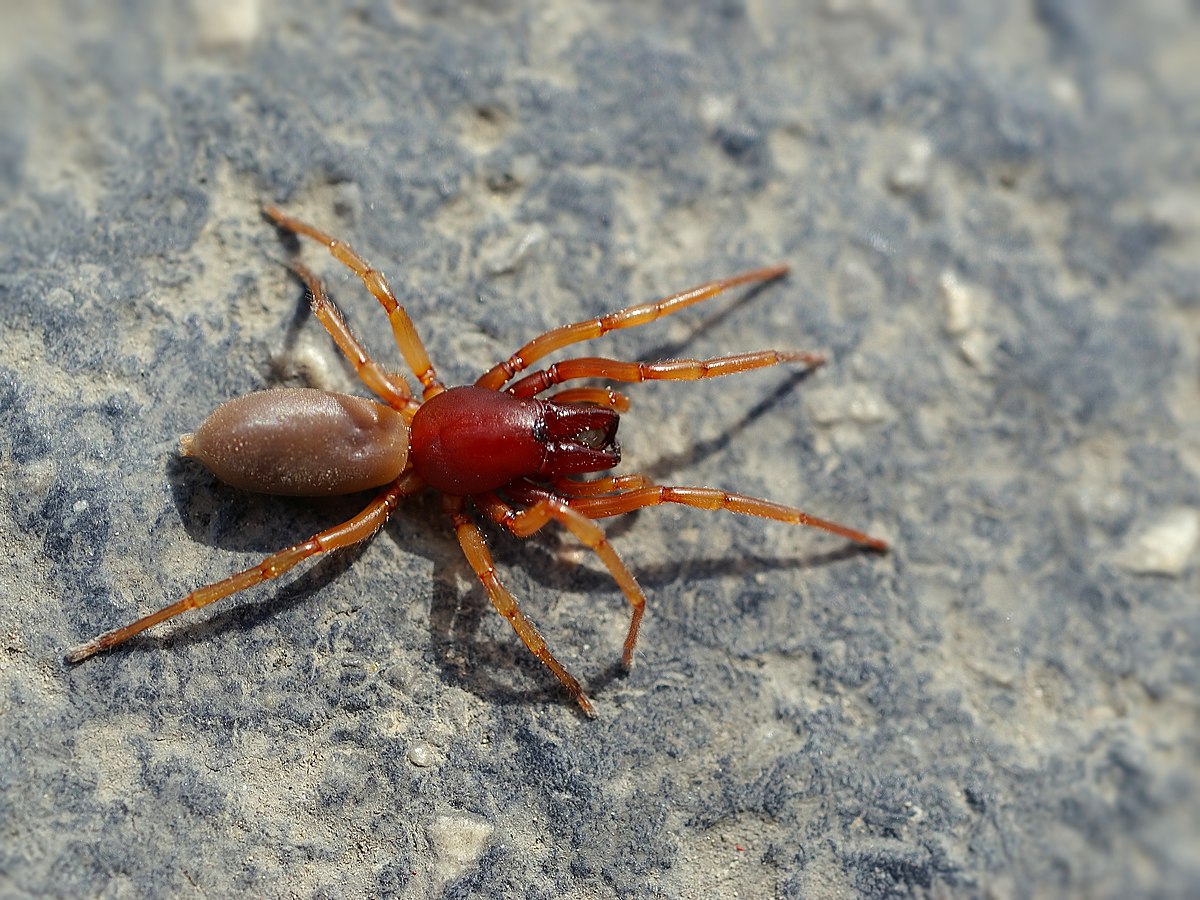Some individuals express fear at the sight of spiders, and the Woodlouse Spider often causes such reactions. Renowned for its significant role in controlling destructive insects in gardens, these spiders display an intriguing penchant for woodlice – earning them their distinctive name.
Introducing the Sizeable Woodlouse Spider
You’ll find the females of this species larger than their male counterparts. Yet, all sport dark red legs and a thorax, plus a distinctive yellow-brown belly. What catches the observer’s eye, however, are their disproportionately large chelicerae. They tend to take refuge in warm, secluded spots such as under logs.

Although rare, one may occasionally discover these spiders within their homes. By day they fashion silk cocoons, but at night, they venture out to hunt for their favoured meal- woodlice.
See Related: Unmasking the Myths: Revealing the Truth about the False Black Widow Spider
Considerations of the Woodlouse Spider Mating Rituals

The processes of mating prove to be precarious for this species. Breeding sees both genders showcasing aggressive behaviours, which, due to their oversized chelicerae, may result in injuries.
Post-mating Care
Post-coitus, the female retreats to her silk cocoon to lay her eggs. Even though there’s some debate on the subject, the consensus among experts is that the females manage the care of eggs.
What Happens After a Woodlouse Spider Bite?

Experiencing a bite from a Woodlouse Spider, while a painful experience, it poses no serious threat as the venom is relatively weak. Typical symptoms include slight redness and swelling on the affected area, dissipating within roughly an hour. Nevertheless, one should exercise caution as this species is sometimes mistaken for the dangerous brown recluse spider. Should any concerns arise, attempt to capture the spider if feasible and consult a healthcare professional promptly.
Hints to Identify them:
- Large fangs that are usual tucked away.
- Their preference for warm, secluded spots.
- Largely non-aggressive behaviour towards humans.
To protect oneself from potential bites, especially while dealing with firewood or other outdoor debris, wearing thick gardening gloves is advised.
Origins and Habitat of the Woodlouse Spider
This spider species, native to Europe, has been introduced to areas like Australia and North America over the years. Although their prevalence is lesser in territories outside Europe, encounters remain a distinct possibility. If you come across this species, allow them to retreat to a dark, hidden area peacefully. In case of a suspected bite, if your symptoms persist or escalate beyond mild discomfort lasting under an hour, it is advised to seek medical attention immediately.